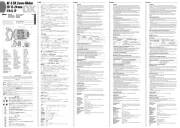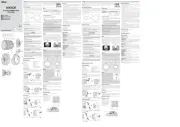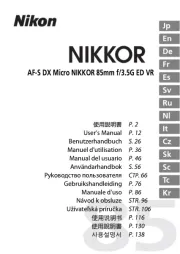Nikon AF-D 50mm f/1.8 Handleiding
Bekijk gratis de handleiding van Nikon AF-D 50mm f/1.8 (2 pagina’s), behorend tot de categorie Lens. Deze gids werd als nuttig beoordeeld door 83 mensen en kreeg gemiddeld 4.5 sterren uit 42 reviews. Heb je een vraag over Nikon AF-D 50mm f/1.8 of wil je andere gebruikers van dit product iets vragen? Stel een vraag
Pagina 1/2

Español
AF Nikkor
50mm
f/1.8D
NIKON CORPORATION Printed in China TT5E09 (80) 7MAA0580-09
使用説明書の内容が破損などによって判読できなくなったときは、ニコンサービス機関にて新しい使用説明書をお求めください(有料)。
No reproduction in any form of this manual, in whole or in part (except for brief
quotation in critical articles or reviews), may be made without written authorization
from NIKON CORPORATION.
English Deutsch Français
You are now the proud owner of the AF Nikkor 50mm f/1.8D, a lens that will
provide you with years of exciting picture-taking opportunities. Before using this
lens, please read these instructions and the notes on safety operations in your
camera’s user’s manual. Also, keep this manual handy for future reference.
Major features
• Autofocus operation is possible with Nikon autofocus cameras (except the F3AF and cameras with
lens mounts that do not have AF coupling); manual focus possible with all Nikon SLRs.
• Compact and lightweight. Ideal for a high-speed normal lens with a maximum aperture of f/1.8.
• For more accurate exposure control, subject distance information is transmitted from the lens to the
camera body, providing 3D Matrix Metering and 3D Multi-Sensor Balanced Fill-Flash with
appropriate Nikon cameras and Speedlights.
Important!
• Be careful not to soil or damage the CPU contacts.
• Do not attach the following accessories to the lens, as they might damage the lens CPU contacts:
Auto Extension Ring PK-1, PK-11 (use PK-11A), Auto Ring BR-4 (use BR-6 with BR-2A),
and K1 Ring.
Other accessories may not be suitable when this lens is used with certain camera bodies. For
details, refer to user’s manual for each product.
• This lens is not compatible when used with a Nikon F3AF camera with the AF Finder DX-1
attached.
Depth of field
If your camera has a depth of field preview (stop-down) function, depth of field can be observed while
looking through the camera viewfinder.
Recommended focusing screens
Various interchangeable focusing screens are available for certain Nikon SLR cameras to suit any
type of lens or picture-taking situation. Those recommended for use with this lens are listed in the
table.
Screen A B C
DE
EC-B
EC-E
F G1 G2 G3
G4
H1
H3
H4 H2 J K L M P R
S
TU
Camera
F6 ◎ ◎ ◎ ◎ ◎
F5+DP-30 ◎ ◎ ◎ ◎ ◎ ◎ ◎
F5+DA-30 ◎ ◎ ◎ ◎ ◎
(+1.0)
◎ ◎
F4+DP-20 ◎ ◎ ◎ ◎
(+0.5)
◎ ◎ ◎
F4+DA-20 ◎
(+0.5)
◎
(+0.5)
◎
(+1.0)
◎
(+0.5)
◎
(+0.5)
◎
(+0.5)
F3 ◎ ◎ ◎ ◎ ◎ ◎ ◎ ◎ ◎ ◎ ◎
◎ : Excellent focusing
○ : Acceptable focusing
Slight vignetting or moiré patterns appear in the viewfinder, but not on the film.
△ : Acceptable focusing
The in-focus image in the central spot may prove to be slightly out of focus on film. Focus on
the surrounding matte area.
( ) : Indicates degree of exposure compensation needed (Center-Weighted metering only). For F6
cameras, compensate by selecting “Other screen” in Custom Setting “b6: Screen comp.” and setting
the EV level to -2.0 to +2.0 in 0.5 EV steps. When using screens other than type B or E, “Other
screen” must be selected even when the required compensation value is “0” (no compensation
required). For F5 cameras, compensate using Custom Setting #18 on the camera body. For
F4-Series cameras, compensate using the Exposure Compensation Dial for the focusing screen.
See user’s manual of the camera body for more details.
Blank box means not applicable. Since type M screen can be used for both macrophotography at a
1:1 magnification ratio and for photomicrography, it has different applications than other screens.
• When using the B/B2/B3, E/E2/E3, and K/K2/K3 focusing screens in cameras other than those
listed above, refer to the columns on the F4 + DP-20’s B, E and K screens, respectively.
Minimum aperture lock (Fig. A)
For programmed auto or shutter-priority auto exposure shooting, use the minimum aperture lock
lever to lock the lens aperture at f/22.
1 Set the lens to its minimum aperture (f/22) by aligning it with the aperture index.
2 Slide the lock lever toward the aperture ring, so the two orange dots are aligned.
To release the lock, slide the lever in the opposite direction.
Taking flash pictures with cameras with a built-in flash
All Nikon cameras with a built-in flash are usable and no vignetting occurs.
Lens care
• To remove dirt and smudges, use a soft, clean cotton cloth or lens tissue moistened with lens
cleaner. Wipe in a circular motion from the center outward.
• Never use thinner or benzene to clean the lens as this might damage the lens, result in a fire, or
cause health problems.
• To protect the front lens element, an NC filter is recommended at all times. A lens hood also helps
protect the front of the lens.
• When storing the lens in the lens case, attach both front and rear caps.
• When the lens will not be used for a long time, store it in a cool, dry place to prevent mold. Also
store the lens away from direct sunlight or chemicals such as camphor or naphthalene.
• Do not get water on the lens or drop it in water as this will cause it to rust and malfunction.
• Reinforced plastic is used for some parts of the lens. To avoid damage, never leave the lens in an
excessively hot place.
Standard accessories
•52mm snap-on front lens cap
Optional accessories
•52mm screw-in filters •Flexible lens pouch CL-0715
•Rubber lens hood HR-2 •Rear lens cap
Specifications
Type of lens: D-type AF Nikkor lens having built-in CPU and Nikon bayonet mount
Focal length: 50mm
Maximum aperture: f/1.8
Lens construction: 6 elements in 5 groups
Picture angle: 46° [31°30’ with Nikon digital cameras (Nikon DX format);
38° with IX240 system cameras]
Distance information: Output to camera body
Focusing: Autofocus; manually via separate focus ring
Shooting distance scale
: Graduated in meters and feet from 0.45m (1.75 ft) to infinity ( )∞
Closest focus distance: 0.45 m (1.5 ft) from focal plane
Aperture scale: f/1.8 to f/22 on both standard and aperture-direct-readout scales
Diaphragm: Fully automatic
Exposure measurement
: Via full-aperture method with AI cameras or cameras with CPU interface
system;
via stop-down method for other cameras
Attachment size: 52mm (P = 0.75mm)
Dimensions: Approx. 63.5mm dia. x 39mm (extension from the camera’s lens
mounting flange)
Weight: Approx. 155g (5.5 oz)
Specifications and designs are subject to change without any notice or obligation on the part of the
manufacturer.
Wir danken Ihnen für das Vertrauen, das Sie Nikon mit dem Kauf des AF Nikkor
50 mm f/1.8D bewiesen haben, und wir hoffen, daß Sie viele Jahre ungetrübte
Freude an Ihrem neuen Objektiv haben werden. Bitte lesen Sie diese
Gebrauchsanweisung sorgfältig durch sowie die entsprechenden Abschnitte im
Benutzerhandbuch Ihrer Kamera. Bewahren Sie diese Anleitung für späteres
Nachschlagen griffbereit auf.
Hauptmerkmale
• Autofokusbetrieb mit entsprechend ausgerüsteten Nikon-Autofokuskameras (außer F3AF und
Kameras, die kein Bajonett mit AF-Anschlussstück haben); manuelle Schärfeneinstellung bei allen
Nikon-Spiegelreflexkameras.
• Kompakt und leicht im Gewicht. Ideal für ein lichtstarkes Normalobjektiv mit einer größten
Blendendöffnung von 1:1,8.
• Für noch genauere Belichtungsregelung wird die Distanz zum Aufnahmeobjekt vom Objektiv an die
Kamera übermittelt, so daß 3D-Matrix-Messung sowie 3D-Multi-Sensor-Aufhellblitzen mit
entsprechend geeigneten Nikon-Kameras und Nikon-Blitzgeräts möglich ist.
Achtung!
• Halten Sie die CPU-Kontakte peinlich sauber, und schützen Sie sie vor Beschädigung!
• Folgendes Zubehör darf nicht an das Objektiv angesetzt werden, da es die CPU-Kontakte
beschädigen könnte: Automatik-Zwischenring PK-1, PK-11 (stattdessen PK-11A verwenden),
Automatikring BR-4 (stattdessen BR-6 mit BR-2A verwenden) und Zwischenring K1. Anderes
Zubehör kann bei Verwendung des Objektivs mit gewissen Kameramodellen ungeeignet sein.
Einzelheiten entnehmen Sie bitte dem jeweiligen Benutzerhandbuch.
• Das Objektiv ist nicht zur Verwendung mit der Nikon F3AF mit angesetztem AF-Sucher DX-1
geeignet.
Schärfentiefe
Verfügt die Kamera über eine Taste oder einen Hebel zur Schärfentiefe-Vorschau (Abblendung), so
läßt sich die Schärfentiefe im Kamerasucher verfolgen.
Empfohlene Einstellscheiben
Für bestimmte Nikon-Kameras stehen verschiedene auswechselbare Einstellscheiben zur Verfügung,
um jeder Aufnahmesituation gerecht zu werden. Die zur Verwendung mit diesem Objektiv
empfohlenen sind nachstehend aufgelistet:
Einstellscheibe
A B C
DEEC-B
EC-E F G1 G2 G3
G4
H1
H3
H4 H2 J K L M P R
S
TU
Kamera
F6 ◎ ◎ ◎ ◎ ◎
F5+DP-30 ◎ ◎ ◎ ◎ ◎ ◎ ◎
F5+DA-30 ◎ ◎ ◎ ◎ ◎
(+1.0) ◎ ◎
F4+DP-20 ◎ ◎ ◎ ◎
(+0.5) ◎ ◎ ◎
F4+DA-20 ◎
(+0.5)
◎
(+0.5)
◎
(+1.0)
◎
(+0.5)
◎
(+0.5)
◎
(+0.5)
F3 ◎ ◎ ◎ ◎ ◎ ◎ ◎ ◎ ◎ ◎ ◎
◎ : Hervorragende Scharfeinstellung
○ : Akzeptable Scharfeinstellung
Das Sucherbild vignettiert leicht. Die Aufnahme selbst bleibt hiervon unberührt.
△ : Brauchbare Scharfeinstellung
Das im mittleren Kreis scharf eingestellte Bild könnte auf dem Film leicht unscharf abgebildet werden.
Stellen Sie auf dem umliegenden Mattfeld scharf.
( ) : Zeigt den Betrag zusätzlich erforderlicher Belichtungskorrektur (Nur mittenbetonte Belichtungsmessung).
Bei F6-Kameras korrigieren Sie durch Wahl von “Andere” in der Individualfunktion “b6: Einstellscheibe”
und Einstellen des LW-Werts im Bereich zwischen –2,0 und +2,0 in 0,5-LW-Schritten. Bei Gebrauch von
anderen Scheiben als B oder E, ist “Andere” auch dann zu wählen, wenn der erforderliche Korrekturwert “0”
beträgt (keine Korrektur nötig). Zur Einstellung des Korrekturwerts am F5 Kameragehäuse dient die
Individualfunktion Nr. 18. Mit den F4-Serien-Geräten durch den Belichtung-Kompensationsanzeiger für
Visiermattscheiben kompensieren.
Näheres hierzu finden Sie im Benutzerhandbuch des Kameragehäuses.
Ein Leerfeld bedeutert: unbrauchbar. Da die Einstellscheibe M sowohl für Maktrofotografie bis zum
Abbildungsmaßstab 1:1 als auch Mikrofotografie eingesetzt werden kann, unterscheidet sich ihr
Anwendungsbereich von dem anderer Einstellscheiben.
• Bei Verwendung der Scheiben B/B2/B3, E/E2/E3 bzw. K/K2/K3 in anderen als den obengenannten Kameras
gelten die Spalten für die Scheiben B, E bzw. K auf F4 + DP-20.
Verriegelung auf kleinster Blende (Abb. A)
Für Programm- und Blendenautomatik muß der Blendenring auf kleinster Öffnung (22) verriegelt
werden.
1 Drehen Sie den Blendenring, bis die Blendenzahl 22 dem Blendenindex gegenübersteht.
2 Schieben Sie den Riegel in Richtung auf den Blendenring, so daß die beiden orangefarbenen
Punkte aufeinander ausgerichtet sind.
Zur Entriegelung schieben Sie den Riegel in die entgegengesetzte Richtung.
Blitzaufnahmen mit Kameras mit eingebautem Blitz
Dieses Objektiv ist ohne jegliche Vignettierungen für Blitzaufnahmen mit allen Nikon-Kameras mit
eingebautem Blitz geeignet.
Pflege des Objektivs
• Reinigen Sie die Linsenoberfläche mit einem leicht mit Linsenreiniger angefeuchteten weichen,
sauberen Baumwolltuch oder Linsenreinigungspapier. Wischen Sie dabei in einer größer
werdenden Kreisbewegung von innen nach außen.
• Verwenden Sie keinesfalls Verdünnung oder Benzin zur Reinigung, da dieses zu Beschädigungen
führen, Gesundheitsschäden verursachen oder ein Feuer auslösen könnte.
• Zum Schutz der Frontlinse empfiehlt es sich, stets ein NC-Filter aufgesetzt zu lassen. Die
Gegenlichtblende wirkt als zusätzlicher Frontlinsenschutz.
• Bei Aufbewahrung des Objektivs in seinem Köcher sollten beide Objektivdeckel aufgesetzt sein.
• Bei längerer Nichtbenutzung sollte das Objektiv an einem kühlen, trockenen Ort aufbewahrt werden.
Halten Sie das Objektiv von direkter Sonneneinstrahlung oder Chemikalien wie Kampfer oder
Naphthalin fern.
• Halten Sie das Objektiv von Wasser fern, das zur Korrosion und zu Betriebsstörungen führen kann.
• Einige Teile des Objektivs bestehen aus verstärktem Kunststoff. Lassen Sie das Objektiv deshalb nie
an übermäßig heißen Orten zurück!
Serienmäßiges Zubehör
•Aufsteckbarer Frontdeckel 52mmφ
Sonderzubehör
•Einschraubfilter 52 mm •Objektivbeutel CL-0715φ
•Gummi-Gegenlichtblende HR-2 •Objektivrückdeckel
Technische Daten
Objektivtyp: AF Nikkor mit D-Charakteristik, eingebauter CPU und Nikon-Bajonett
Brennweite: 50 mm
Maximale Blendenöffnung: f/1,8
Optischer Aufbau: 6 Linsen in 5 Gruppen
Bildwinkel: 46° [31°30’ bei Nikon-Digitalkameras (Nikon DX-Format);
38° bei IX240-Kameras]
Entfernungsdaten: Werden an Kameras übertragen
Schärfeneinstellung: Autofokus; manuell über separaten Fokussierring
Entfernungsskala: Unterteilt in Meter und Fuß und zwar von 0,45m bis Unendlich (∞)
Kürzeste Aufnahmedistanz: 0,45 m von der Sensorebene gemessen
Blendenskala: f/1.8 — f/22, sowohl auf der Standardskala als auch der Skala für
Blendendirekteinspiegelung
Blendenart: Vollautomatisch
Belichtungsmessung: Offenblendenmessung bei Kameras mit AI-Blendenkupplung oder
CPU-Interface-System; Arbeitsblendenmessung bei allen anderen
Kameras
Befestigungsgröße: 52 mm (P = 0,75mm)
Abmessungen: ca. 63,5 mm Durchm. x 39 mm (Länge bis Flansch)
Gewicht: ca. 155 g
Änderungen von technischen Daten und Design durch den Hersteller vorbehalten.
Vous êtes maintenant l’heureux propriétaire d’un AF Nikkor 50mm f/1.8D, un objectif
qui vous permettra de prendre des photos remarquables pendant des années. Avant
d’utiliser cet objectif, veuillez lire ce mode d’emploi et les remarques sur la sécurité
dans le manuel d’utilisation de votre boîtier. Conservez ce manuel à portée de la main
pour toute référence ultérieure.
Principales caractéristiques
• L’autofocus est possible avec un boîtier autofocus Nikon (sauf F3AF et les appareils photo à monture
d'objectif sans couplage AF), la mise au point manuelle avec tous les appareils reflex Nikon.
• Compact et léger. Idéal pour un objectif normal grande vitesse à ouverture maximale de f/1.8.
• Pour assurer un contrôle d’exposition plus précis, l’information de distance au sujet est transmise de
l’objectif au boîtier, ce qui permet la mesure matricielle 3D et le dosage auto flash/ambiance par multi-
capteur 3D avec les boîtiers et flashes Nikon convenables.
Important
• Veiller à ne pas salir ni endommager les contacts CPU.
• Ne pas essayer de monter les accessoires suivants, car ils risquent d’abimer les contacts: Bague d’auto-
rallonge PK-1, PK-11 (utilisez PK-11A), Bague auto BR-4 (utilisez la bague BR-6 avec BR-2A) et Bague K1.
D’autres accessoires peuvent ne pas convenir lorsque l’objectif est utilisé avec certains appareils. Se
référer aux manuels d’utilisation.
• Cet objectif n’est pas compatible avec le boîtier F3AF équipé du viseur DX-1.
Profondeur de champ
Si votre appareil est pourvu d’une fonction de prévisionnage de la mise au point (ouverture réelle), vous
pouvez observer la profondeur de champ en regardant dans le viseur.
Écrans de mise au point recommandés
Divers écrans de mise au point sont disponibles pour certains appareils Nikon SLR qui s’adaptent à toutes
les conditions de prise de vues. Les écrans recommandés avec cet objectif sont listés ci-dessons:
Verre A B C
DEEC-B
EC-E F G1 G2 G3
G4
H1
H3
H4 H2 J K L M P R
S
TU
Appareil
F6 ◎ ◎ ◎ ◎ ◎
F5+DP-30 ◎ ◎ ◎ ◎ ◎ ◎ ◎
F5+DA-30 ◎ ◎ ◎ ◎ ◎
(+1.0) ◎ ◎
F4+DP-20 ◎ ◎ ◎ ◎
(+0.5) ◎ ◎ ◎
F4+DA-20 ◎
(+0.5)
◎
(+0.5)
◎
(+1.0)
◎
(+0.5)
◎
(+0.5)
◎
(+0.5)
F3 ◎ ◎ ◎ ◎ ◎ ◎ ◎ ◎ ◎ ◎ ◎
◎ : Mise au point excellente
○ : Mise au point passable
Un vignetage affecte l’image du verre. L’image sur la pellicule ne porte cependant aucune tracede ceci.
△ : Mise au point passable
L’image mise au point dans le cercle central pourrait s’avérer légèrement floue sur la pellicule. La mise au point
doit donc être faite sur la couronne dépolie entourant le cercle central du verre de visée.
( ) : Indique la compensation de l’exposition additionnelle requise (Mesure pondérée centrale uniquement). Pour les
appareils F6, corrigez en sélectionnant “Activ.: autre” dans le réglage personnalisé “b6: Plage visée” et en réglant le
niveau IL de -2,0 à +2,0 par pas de 0,5 IL. Lorsque vous utilisez des verres autres que ceux de type B ou E, il faut
sélectionner “Activ.: autre” même lorsque la valeur de correction est de “0” (pas de correction nécessaire). Pour les
appareils F5, compenser en utilisant le réglage personnalisé n° 18 sur l’appareil. Pour les appareils de la série F4,
compenser en utilisant le cadran de compensation de l’exposition prévu pour les filtres de mise au point.
Voyez le manuel d’utilisation de l’appareil photo pour plus de détails.
Un blanc indique aucune application. Du fait que le verre M peut être utilisé pour la macrophotographie à un rapport
d’agradissement 1:1 et pour la photomicrographie, il a des applications diffèrentes de celles des autres verres.
• Lors de l’utilisation de verres B/B2/B3, E/E2/E3 ou K/K2/K3 dans des appareils autres que ceux indiqués ci-dessus,
se reporter respectivement aux colonnes des verres B, E, K de F4 + DP-20.
Blocage d’ouverture minimale (Fig. A)
En mode Programme ou Auto priorité vitesse, réglez puis verrouillez le diaphragme sur l’ouverture
minimale (f/22).
1 Réglez le diaphragme sur l’ouverture mini (f/22) en alignant sur le repère d’ouverture.
2 Glissez le curseur de blocage vers la bague de diaphragme de sorte que les deux points orange soient
alignés.
Pour débloquer, glissez le curseur dans l’autre direction.
Prise de vues au flash avec un appareil à flash intégré
Tous les appareils Nikon à flash intégré sont utilisables et il n’y a pas de vignettage.
Soin de l’objectif
• Utilisez un chiffon en coton doux et propre ou du tissu de nettoyage pour objectif légèrement humidifié
de liquide de nettoyage pour objectif pour éliminer la saleté et les taches. Essuyez avec des
mouvements circulaires du centre vers l’extérieur.
• Ne jamais employer de solvant ou de benzènes qui pourrait endommager l’objectif, prendre feu ou nuire
à la santé.
• Il est recommandé d’utiliser un filtre NC en permanence, pour protéger la lentille frontale. Un paresoleil
assure également une bonne protection contre les chocs.
• Lors du rangement de l’objectif dans son étui, penser à remettre en place les bouchons avant et arrière.
• En cas d’inutilisation pour une longue période, entreposer le matériel dans un endroit frais, sec et aéré
pour éviter les moisissures. Tenir le matériel éloigné des sources de lumière, et des produits chimiques
(camphre, naphtaline, etc.).
• Eviter les projections d’eau ainsi que l’immersion, qui peut provoquer la rouille et des dommages
irréparables.
• Divers matériaux de synthèse sont utilisés dans la fabrication. Pour éviter tout problème, ne pas
soumettre l’objectif à de fortes chaleurs.
Accessoires fournis
•Bouchon avant d’objectif diamètre 52 mm
Accessoires en option
•Filtres vissants 52 mm •Sac souple pour objectif CL-0715
•Parasoleil de caoutchouc HR-2 •Bouchon arrière
Caractéristiques
Type d’objectif: Nikkor AF de type D avec processeur et monture baïonnette Nikon
Focale: 50 mm
Ouverture maximale: f/1,8
Construction optique: 6 éléments en 5 groupes
Champ angulaire: 46° [31°30’ avec l’appareil numérique Nikon (format Nikon DX);
38° sur les appareils de système IX240]
Informations sur
la distance: A l’appareil
Mise au point: Autofocus; manuel par bague de mise au point séparée
Echelle des distances: Graduée en mètres et pieds depuis 0,45m à l’infini ( )∞
Distance de mise au
point minimale: 0,45 m à partir du plan focal
Echelle des ouvertures: f/1.8 — f/22 pour les échelles standard et de lecture directe de l’ouverture
Diaphragme: Entièrement automatique
Mesure de l’exposition: Via méthode pleine ouverture avec les appareil AI ou appareils avec système
d’interface CPU; par fermeture pour les autres appareils
Taille des accessoires: 52 mm (P = 0,75 mm)
Dimensions: Env. 63,5 mm diam. x 39 mm (rallonge de la bride de montage d’objectif de
l’appareil)
Poids: Env. 155 g
Les caractéristiques et le dessin sont susceptibles d’être modifiés sans préavis ni obligation de la part du
constructeur.
Avis pour les clients en France
LE PRODUIT ET SON EMBALLAGE RELÈVENT D’UNE CONSIGNE DE TRI
このたびは、ニッコールレンズをお買い上げいただきありがとうございます。
ご使用の前にこの「使用説明書」をよくお読みのうえ、十分に理解してから正し
くお使いください。お読みになった後は、お使いになる方がいつでも見られる所
に必ず保管してください。
主な特長
● ニコンの AF[オートフォーカス(レンズマウントに AF カップリングがないカメラ、F3AF
を除く)]カメラとの組み合わせでオートフォーカス撮影ができます。また、マニュアル(手
動)によるピント合わせも可能です。
● 軽量・コンパクトで、また開放 F 値が F1.8 と非常に明るく、標準レンズとして最適です。
● 被写体までの距離情報をカメラボディーに伝達する機能を備えていますので、距離情報に対
応したニコンカメラやフラッシュ使用時、より的確な露出制御を実現する3D-マルチパターン
測光や3D-マルチBL調光を可能とします。
注 記
● レンズの CPU 信号接点は汚さないようにご注意ください。
● CPU 信号接点を破損しますので、オート接写リング 、オートリング PK-1、PK-11 BR-4 ま
たは K1 リングはご使用になれません(PK-11 PK-11Aの代わりには リングを、またオート
リング BR-4 BR-6 と BR-2Aの代わりには を組み合わせてご使用ください)。その他のアク
セサリーとカメラボディーとの組み合わせ使用に際しては、必ず各製品の使用説明書も併せて
ご参照ください。
● ニコン F3AF 用 DX-1 ファインダーと組み合わせての使用はできません。
被写界深度
プレビュー(絞り込み)機構を持つカメラでは、撮影前に被写界深度を確認することができ
ます。
ファインダースクリーンとの組み合わせ
ニコン F6、F5、F4 シリーズカメラボディーには、多種類のファインダースクリーンがあり、
レンズのタイプや撮影条件に合わせて最適なものを選べます。このレンズに適したファイン
ダースクリーンは、下表のとおりです。(なお、ご使用に際しては、必ず、各カメラボディー
の使用説明書も併せてご参照ください。)
スクリーン
A B C
DEEC-B
EC-E F G1 G2 G3
G4
H1
H3
H4 H2 J K L M P R
S
TU
カメラ
F6 ◎ ◎ ◎ ◎ ◎
F5+DP-30 ◎ ◎ ◎ ◎ ◎ ◎ ◎
F5+DA-30 ◎ ◎ ◎ ◎ ◎
(+1.0) ◎ ◎
F4+DP-20 ◎ ◎ ◎ ◎
(+0.5) ◎ ◎ ◎
F4+DA-20 ◎
(+0.5)
◎
(+0.5)
◎
(+1.0)
◎
(+0.5)
◎
(+0.5)
◎
(+0.5)
F3 ◎ ◎ ◎ ◎ ◎ ◎ ◎ ◎ ◎ ◎ ◎
構図の決定やピント合わせの目的には
◎ : 最適です。
○ : 視野の一部が多少見にくくなりますが、撮影結果に全く影響がありません。
△ : スプリットの合致像は見えますが、ピント合わせは精度上適しません。
( ) : 中央部重点測光時の補正値です。F6 カメラの場合、測光値の補正は、カメラのカスタム
メニュー「b6:スクリーン補正」を「B or E 以外」にセットして行います。B 型および
E 型以外を使用する場合は、補正量が 0 でも、「B or E 以外」にセットしてください。
F5 カメラの場合は、カスタムセッティング No.18 の設定で測光値の補正を行います。
F4 シリーズカメラの場合は、ファインダースクリーン露出補正ダイヤルを回して補正を
行います。詳しくはカメラの使用説明書をご覧ください。
空欄 : 使用不適当です。ただし、M スクリーンの場合、撮影倍率 1 / 1 倍以上の近接撮影に
用いられるため、この限りではありません。
* 上記以外のカメラで B / B2 / B3、E / E2 / E3、K / K2 / K3 スクリーンの見え方は、
それぞれ F4 + DP-20 の B、E、K スクリーンの欄を参考にしてください。
最小絞りロックレバー(図 A)
プログラムオートやシャッター優先オートによる撮影時は、絞りリングを最小絞りに固定して
おくことができます。まずレンズの絞りリングを回し、最小絞り(最も大きい数値)を絞り指
標に合わせます。次に、最小絞りロックレバーを絞りリングの方向にスライドし 2 つのオレン
ジ指標を合わせます。これで絞りリングは最小絞りでロックされます。ロックレバーを反対方
向にスライドするとロックは解除されます。
カメラ内蔵フラッシュ使用時のご注意
ニコンの全てのフラッシュ内蔵カメラは、画面のケラレなくお使いいただけます。
レンズのお手入れと取り扱い上のご注意
● レンズ表面のホコリや汚れは、市販のレンズクリーナーを湿らせた柔らかい木綿の布で、中
心から外側に円を描くように拭き取ります。
● シンナーやベンジンなどの有機溶剤は絶対に使用しないでください。
● レンズ表面の汚れや傷を防ぐために、NC フィルターを常用することをおすすめします。また、
レンズフードも役立ちます。
● レンズをケースに入れるときは、必ず、レンズキャップを前後に取り付けてください。
● レンズを長期間使用しないときは、カビやサビを防ぐために、高温多湿のところを避けて風
通しのよい場所に保管してください。また、直射日光のあたるところ、ナフタリンや樟脳の
あるところも避けてください。
● レンズを水に濡らすと、部品がサビつくなどして故障の原因となりますのでご注意ください。
● ストーブの前など、高温になるところに置かないでください。極端に温度が高くなると、外
観の一部に使用している強化プラスチックが変形することがあります。
付属アクセサリー
● 52mm スプリング式レンズキャップ
別売アクセサリー
● 52mm ネジ込み式フィルター ● ソフトケース CL-0715
● ラバーフード HR-2 ● 裏ぶた
仕 様
型式: ニコン F マウント CPU 内蔵 D タイプ、AF レンズ
焦点距離: 50mm
最大口径比: 1:1.8
レンズ構成: 5 群 6 枚
画角: 46°(ニコンデジタル一眼レフカメラ[ニコン DX フォーマット]
装着時 31°30′、IX240 カメラ装着時 38°)
撮影距離情報: カメラボディーへの撮影距離情報出力可能
ピント合わせ: オートフォーカス(フォーカスリング回転によりマニュアルフォーカス
も可)
撮影距離目盛: ∞∼ 0.45m、1.75ft(併記)
最短撮影距離: 撮像面から 0.45 m
絞り目盛: 1.8、2.8、4、5.6、8、11、16、22
最小絞りロック可能(ファインダー内直読み用目盛併記)
絞り方式: 自動絞り
測光方式: CPU・AI 方式のカメラボディーでは開放測光、従来方式のカメラボディー
では絞り込み測光。
アタッチメントサイズ
: 52mm(P = 0.75mm)
大きさ: 約 63.5mm(最大径)×約 39mm(長さ:バヨネットマウント基準面
からレンズ先端まで)
質量: 約 155g
● 仕様、外観の一部を、改善のため予告なく変更することがあります。
日本語
①
②
③
④
⑤
⑥
⑦
⑧
⑨
⑩
⑭
⑪
⑫
⑬
Fig. A Levier de verrouillage d’ouverture
minimale
Fig. A Palanca de bloqueo de apertura
mínima
図 A 最小絞りロックレバー
Fig. A Minimum aperture lock
lever
Abb. A Verriegelung für kleinste Blende
Usted es ahora el nuevo propietario del AF Nikkor 50 mm f/1.8D, un objetivo para
que pueda disfrutar de muchos años de oportunidades para hacer fotografías
excitantes. Antes de utilizar este objetivo, lea estas instrucciones y las notas sobre
un uso seguro en el manual del usuario de su cámara. Guarde este manual en un
lugar a mano para su referencia en el futuro.
Principales funciones
• Es posible un funcionamiento con enfoque automático en las cámaras de enfoque automático de
Nikon (excepto F3AF y las cámaras con monturas del objetivo sin acoplamiento AF); aunque es
posible el enfoque manual con todas las SLR de Nikon.
• Compacto y liviano. Ideal para un objetivo normal de alta velocidad con una apertura máxima
de f/1.8.
• Para un control de exposición más preciso, la información de distancia del objeto se transmite del
objetivo a la cámara, para una medición por matriz tridimensional y un flash de relleno balanceado
con sensor múltiple tridimensional, con las cámaras Nikon y Speedlights apropiados.
¡Importante!
• Tener cuidado de no manchar o dañar los contactos de la CPU.
• No montar en el objetivo los siguientes accesorios, p1-ya que podrían dañar los contactos de la CPU:
Anillo de Autoextensión PK-1, PK-11 (utilice PK-11A), Anillo Auto BR-4 (utilice BR-6 con BR-2A)
o Anillo K1.
Puede que otros accesorios no sean apropiados cuando se usa este objetivo con determinados
cuerpos de cámara. Para más detalles, ver el manual del usuario de cada producto.
• Este objetivo no se puede usar con una cámara Nikon F3AF que lleve montado el Visor AF DX-1.
Profundidad de campo
Si su cámara tiene una función de previsualización de profundidad de campo (cierre de iris), puede
observarse la profundidad de campo mientras mira por el visor de la cámara.
Pantallas de enfoque recomendadas
Hay diferentes pantallas de enfoque intercambiables para algunas cámaras SLR de Nikon apropiados
para cualquier situación fotográfica. Las recomendadas para utilizar con este objetivo son las que
aparecen en la lista a continuación.
Pantalla A B C
DEEC-B
EC-E F G1 G2 G3
G4
H1
H3
H4 H2 J K L M P R
S
TU
Cámara
F6 ◎ ◎ ◎ ◎ ◎
F5+DP-30 ◎ ◎ ◎ ◎ ◎ ◎ ◎
F5+DA-30 ◎ ◎ ◎ ◎ ◎
(+1.0) ◎ ◎
F4+DP-20 ◎ ◎ ◎ ◎
(+0.5) ◎ ◎ ◎
F4+DA-20 ◎
(+0.5)
◎
(+0.5)
◎
(+1.0)
◎
(+0.5)
◎
(+0.5)
◎
(+0.5)
F3 ◎ ◎ ◎ ◎ ◎ ◎ ◎ ◎ ◎ ◎ ◎
◎ : Enfoque excelente
○ : Enfoque aceptable
Ligero viñeteo afecta la imagen de la pantalla, pero la imagen de la película no es afectada
por esto.
△ : Enfoque aceptable
La imagen enfocada en el circulo central puede resultar ligeramente desenfocada en la fotografía. Se
aconseja enfocar mediante el área mate circundante.
( ) : Indica la cantidad de compensación adicional necesaria (Solamente medición ponderada central). Para
cámaras F6, compense seleccionando “Otra pantalla” en el ajuste personal del usuario “b6: Compens
pantalla” y ajustando el nivel EV a -2,0 a +2,0 en pasos de 0,5 EV. Cuando se utilice una pantalla que no
sea de tipo B o E, debe seleccionarse “Otra pantalla” incluso cuando el valor de compensación requerido
sea “0” (no se requiere compensación). Para la cámara F5 compense usando el ajuste personal del usuario
No. 18 en el cuerpo de la cámara. Para las cámaras de la serie F4, compense usando el dial de
compensación de exposición para las pantallas de enfoque.
Para más detalles, consulte el manual del usuario de la cámara.
Los blancos significan inaplicable. Como la pantalla de tipo M se usa para macrofotografía a una razón de
aumento de 1:1 asi como para microfotografía, su aplicación es distinta a la de las demás pantallas.
• Cuando se utilicen las pantallas de enfoque B/B2/B3, E/E2/E3 y K/K2/K3 en cámaras distintas de las
relacionadas arriba, vea las columnas de las pantallas B, E y K, de F4 + DP-20 respectivamente.
Bloqueo de la apertura mínima (Fig. A)
Para disparar con exposición automática programada o automática con prioridad al obturador, utilizar
la palanca de bloqueo de la apertura mínima para fijar la apertura del objetivo en f/22.
1 Ajustar el objetivo a su apertura mínima (f/22) alineándolo con el índice de apertura.
2 Deslice la palanca de fijación hacia el anillo de aperturas para que se alineen dos puntos naranjas.
Para desbloquearlo, deslizar la palanca en la dirección opuesta.
Cuando se hacen fotografías con flash en cámaras con flash incorporado
Todas las cámaras Nikon con flash incorporado pueden utilizarse sin que se produzca un viñetado.
Forma de cuidar el objetivo
• Para eliminar la suciedad y las manchas, utilice un paño de algodón suave y limpio o un papel para
cristales empapado con limpiador de cristales. Limpie con un movimiento circular del centro al
borde exterior.
• No usar en ningún caso disolvente o benceno para limpiar el objetivo p1-ya que podría dañarlo,
provocar un incendio o causar problemas sanitarios.
• Se recomienda utilizar en todo momento un filtro NC para proteger el elemento frontal del objetivo.
También un parasol contribuirá a proteger la parte frontal del objetivo.
• Cuando se guarde el objetivo en su estuche, colocarle las dos tapas.
• Cuando no se vaya a utilizar el objetivo durante largo tiempo, guardarlo en un lugar fresco y seco
para evitar la formación de moho. Guardar el objetivo, además, lejos de la luz solar directa o de
productos químicos tales como alcanfor o naftalina.
• No mojar el objetivo ni dejarlo caer al agua, p1-ya que se oxidaría y no funcionaría bien.
• Algunas partes del objetivo son de plástico reforzado. Para evitar daños, no dejarlo nunca en un
lugar excesivamente caliente.
Accesorios estándar
•Tapa frontal a presíon de 52mm
Accesorios opcionales
•Filtros roscados de 52 mm •Bolsa de objetivo flexible CL-0715
•Parasol de hule HR-2 •Tapa trasera del objetivo
Especificaciones
Tipo de objetivo: AF Nikkor tipo D con CPU incorporada y montura de bayoneta Nikon
Distancia focal: 50 mm
Abertura máxima: f/1,8
Estructura del objetivo: 6 lentes en 5 grupos
Angulo de imagen: 46° [31°30’ con cámaras digitales Nikon (Formato Nikon DX); 38°
con cámaras de sistema IX240]
Información de distancia: Salida al cuerpo de la cámara
Enfoque: Enfoque automático; manual por anillo de enfoque independiente
Escala de distancias
de las tomas:
Graduada en metros y en pies desde 0,45m hasta infinito ( )∞
Distancia de enfoque
más cercana: 0,45 m a partir del plano focal
Escala de aberturas: f/1.8 — f/22 en escalas normales y de lectura directa de aberturas
Diafragma: Totalmente automático
Medición de la exposición: Método de abertura total con cámaras AI o cámaras con sistema de
interfase CPU; método de reducción de parada para otras cámara.
Tamaño de accesorios: 52 mm (P = 0,75mm)
Dimensiones: Aprox. 63,5 mm de diám. x 39 mm (desde la pestaña de montaje)
Peso: Aprox. 155 g
Las especificaciones y los diseños están sujetos a cambio sin previo aviso ni obligación por parte del
fabricante.
この表示を無視して、誤った取り扱いをすると、人が死亡または重傷を負う可能性が想定され
る内容を示しています。
この表示を無視して、誤った取り扱いをすると、人が傷害を負う可能性が想定される内容およ
び物的損害の発生が想定される内容を示しています。
安全上のご注意
ご使用の前に「安全上のご注意」をよくお読みのうえ、正しくお使いください。この「安全上のご注意」は製品
を安全に正しく使用していただき、あなたや他の人々への危害や財産への損害を未然に防止するために、重要な
内容を記載しています。お読みになった後は、お使いになる方がいつでも見られる所に必ず保管してください。
表示について
表示と意味は次のようになっています。
注意
警告
△記号は、注意(警告を含む)を促す内容を告げるものです。図の中や近くに具体的な注意内容(左
図の場合は感電注意)が描かれています。
記号は、禁止の行為(してはいけないこと)を告げるものです。図の中や近くに具体的な禁止内容
(左図の場合は分解禁止)が描かれています。
●記号は、行為を強制すること(必ずすること)を告げるものです。図の中や近くに具体的な強制内
容(左図の場合は電池を取り出す)が描かれています。
お守りいただく内容の種類を、次の絵表示で区分し、説明しています。
絵表示の例
1絞りリング
Aperture ring
Blendenring
2露出計連動ガイド
Meter coupling
ridge
Steuerkurve
Index de couplage du
posemètre
Protuberancia de
acoplamiento al
exposímetro
3CPU信号接点
CPU contacts
CPU-Kontakte
Contacts CPU
Contactos CPU
4開放F値連動ガイド
Aperture indexing
post
Anschlag für
Blendenkupplung
Douille d’indexation
d’ouverture
Poste de índice de
apertura
5
ファインダー内直読用絞り目盛
Aperture-direct-
readout scale
Skala für Blenden-
direkteinspiegelung
Echelle de lecture directe de
l’ouverture
Escala de lectura directa de
apertura
6
最小絞り信号ガイド(EE連動ガイド)
Minimum aperture
signal post (EE
servo coupling
post)
Signalstift für kleinste Blende
(Kupplungsstift für
automatische
Blendensteuerung)
Levier de signal d’ouverture
minimale (levier de servo
couplage EE)
Borne de señal de abertura
mínima (Borne de
acoplador EE)
7絞り目盛
Aperture scale
Blendenskala
Echelle des ouvertures
Escala de apertura
8絞り指標/着脱指標
Aperture index/
Mounting index
Blenden-index/Objektivindex
Index d’ouverture/index de
montage
Indice de aberturas/índice de
monturas
9距離目盛基準線
Distance index line
Entfernungs Indexlinie
Ligne de repère des distance
Línea indicadora de distancias
a赤外補正マーク
Infrared
compensation index
Infrarot-Kompensationsindex
Repère de mise au point en
infrarouge
Indicador de enfoque
infrarrojo
b被写界深度目盛
Depth-of-field scale
Schärfentiefe-Skala
Echelle des profondeurs de
champ
Escala de profundidad de
campo
c距離目盛
Distance scale
Entfernungsskala
Echelle des distances
Escala de distancias
dフォーカスリング
Focus ring
Entfernungseinstellring
Bague de mise au point
Anillo de enfoque
e最小絞りロックレバー
Minimum aperture
lock lever
Verriegelung für kleinste
Blende
Levier de verrouillage
d’ouverture minimale
Palanca de fijación de
apertura mínima
Bague des ouvertures
Anillo de aberturas
Jp
En
De
Fr
Es
Sc
It
Tc
使用説明書
User’s Manual
Benutzerhandbuch
Manuel d’utilisation
Manual del usuario
使用说明书
Manuale d’uso
使用說明書
警 告
分解禁止
分解したり、修理や改造をしないこと
感電したり、異常動作をしてケガの原因となります。
接触禁止
すぐに修理依頼を
落下などによって破損し、内部が露出したときは、露出部に手を触れないこと
感電したり、破損部でケガをする原因となります。カメラの電池を抜いて、販売店または
ニコンサービス機関に修理を依頼してください。
電池を取る
すぐに修理依頼を
熱くなる、煙が出る、こげ臭いなどの異常時は、速やかにカメラの電池を取り出すこと
そのまま使用すると火災、やけどの原因となります。電池を取り出す際、やけどに充分注意
してください。電池を抜いて、販売店またはニコンサービス機関に修理を依頼してください。
水かけ禁止
水につけたり、水をかけたり、雨にぬらしたりしないこと
発火したり感電の原因となります。
使用禁止
引火、爆発のおそれのある場所では使用しないこと
プロパンガス・ガソリンなど引火性ガスや粉塵の発生する場所で使用すると、爆発や火災
の原因となります。
見ないこと
レンズまたはカメラで直接太陽や強い光を見ないこと
失明や視力障害の原因となります。
注 意
感電注意
ぬれた手でさわらないこと
感電の原因になることがあります。
放置禁止
製品は幼児の手の届かないところに置くこと
ケガの原因になることがあります。
使用注意
逆光撮影では、太陽を画角から充分にずらすこと
太陽光がカメラ内部で焦点を結び、火災の原因になることがあります。画角から太陽を
わずかに外しても火災の原因になることがあります。
保管注意
使用しないときは、レンズにキャップをつけるか太陽光のあたらない所に保管すること
太陽光が焦点を結び、火災の原因になることがあります。
移動注意
三脚にカメラやレンズを取り付けたまま移動しないこと
転倒したりぶつけたりしてケガの原因になることがあります。
放置禁止
窓を閉め切った自動車の中や直射日光が当たる場所など、異常に温度が高く
なる場所に放置しないこと
内部の部品に悪い影響を与え、火災の原因となることがあります。

Italiano
Ora potete dire con orgoglio di possedere l’AF Nikkor 50mm f/1.8D, un obiettivo
che vi offrirà per anni eccitanti opportunità per scattare fotografie. Prima di usare
l’obiettivo, leggere queste istruzioni e le note sulle operazioni di sicurezza
contenute nel manuale d’uso della vostra fotocamera. Tenere inoltre il presente
manuale a portata di mano per poterlo consultare in futuro.
Caratteristiche principali
• Il funzionamento con messa a fuoco automatica è possibile con le fotocamere autofocus Nikon
(tranne la F3AF e le fotocamere con innesti dell’obiettivo senza accoppiamento AF); la messa a
fuoco manuale è possibile con tutte le reflex Nikon.
• Unità compatta e leggera. Ideale per un obiettivo normale ad alta velocità e apertura massima di
f/1.8.
• Per un controllo più accurato dell’esposizione, le informazioni sulla distanza del soggetto vengono
trasmesse dall’obiettivo al corpo della fotocamera, garantendo il 3D Matrix Metering e il 3D Multi-
Sensor Balanced Fill-Flash con le fotocamere e gli Speedlight Nikon appropriati.
Importante!
• Fate attenzione a non sporcare o danneggiare i contatti CPU.
• Gli accessori elencati non vanno montati su questo obiettivo, in quanto potrebbero danneggiarne i
contatti CPU: Anello di Prolunga Automatico PK-1, PK-11 (usare PK-11A), Anello Auto BR-4
(usare BR-6 con BR-2A), Anello K1.
Altri accessori, nell’impiego con determinati corpi camera, possono risultare inadatti. Per maggiori
dettagli, consultate i relativi manuali d’uso.
• Quest’ottica non è utilizzabile abbinata alla fotocamera Nikon F3AF con il mirino autofocus DX-1
montato.
Profondità di campo
Se la vostra fotocamera è dotata di un pulsante o di una leva per l’anteprima della profondità di
campo (Stop-Down), è possibile osservare la profondità di campo guardando nel mirino della
fotocamera.
Schermi di messa a fuoco consigliati
Per alcune fotocamere SLR Nikon sono disponibili vari schermi di messa a fuoco intercambiabili
adatti a ogni situazione di ripresa. Gli schermi consigliati per l’uso con questo obiettivo sono
elencati sotto.
Schermo
A B C
DEEC-B
EC-E F G1 G2 G3
G4
H1
H3
H4
H2 J K L M P
R
S
T
U
Fotocamera
F6 ◎ ◎ ◎ ◎ ◎
F5+DP-30 ◎ ◎ ◎ ◎ ◎ ◎ ◎
F5+DA-30 ◎ ◎ ◎ ◎ ◎
(+1.0) ◎ ◎
F4+DP-20 ◎ ◎ ◎ ◎
(+0.5) ◎ ◎ ◎
F4+DA-20 ◎
(+0.5)
◎
(+0.5)
◎
(+1.0)
◎
(+0.5)
◎
(+0.5)
◎
(+0.5)
F3 ◎ ◎ ◎ ◎ ◎ ◎ ◎ ◎ ◎ ◎ ◎
◎ : Messa a fuoco eccellente
○ : Messa a fuoco accettabile
L’immagine sullo schermo presenta una riduzione di luminosità o tracce di fenomeno del moiré. Questo
però non lascia tracce sulla pellicola.
△ : Messa a fuoco accettabile
L’immagine messa a fuoco al centro potrebbe risultare leggermente fuori fuoco sulla pellicola. Mettere a
fuoco la zona circostante il soggetto.
( ) : Indica il valore della compensazione di esposizione aggiuntiva richiesto (Solamente misurazione a
preferenza centrale). Con le fotocamere F6, compensare selezionando “Otra pantalla” nell’impostazione
personalizzata “b6: Compens pantalla”, quindi impostando il livello EV tra -2.0 e +2.0 ad intervalli di 0,5
EV. Quando si utilizzano schermate diverse da B o E, è necessario selezionare “Otra pantalla” anche quando
il valore di compensazione richiesto è pari a “0” (nessuna compensazione necessaria). Per la fotocamera
F5, compensare utilizzando l’impostazione personalizzata 18 sul corpo della fotocamera. Per gli apparecchi
della serie F4, compensare utilizzando il quadrante di compensazione dell’esposizione previsto per i filtri di
messa a fuoco.
Per ulteriori dettagli, fare riferimento al manuale d’uso della fotocamera.
Il quadrato vuoto non è applicabile. Come lo schermo del tipo M può essere utilizzato per macrofotografia con
rapporto di ingrandimento 1:1 e fotomicrografia, esso presenta differenti applicazioni che agli altri schermi.
• Impiegando gli schermi B/B2/B3, E/E2/E3 ed K/K2/K3 con fotocamere diverse da quelle elencate sopra, fare
riferimento alle colonne riguardanti gli schermi B, E e K di F4 + DP-20, rispettivamente.
Blocco al diaframma minimo (Fig. A)
Per la ripresa nei modi di esposizione automatica Programmata o a Priorità dei tempi, fate uso della
leva di blocco al diaframma minimo, per mantenere prefissato il valore f/22.
1 Regolate il diaframma al valore minimo, f/22, allineandolo all’indice delle aperture.
2 Spingete la leva di blocco verso l’anello di apertura cosicché i due puntini arancioni risultino
allineati.
Per liberare la leva, spingetela nella direzione opposta.
Quando si scattano fotografie con il flash utilizzando fotocamere con
flash incorporato
Tutte le fotocamere Nikon con flash incorporato sono utilizzabili e non si riscontrerà alcuna riduzione
di luminosità ai margini dell’immagine (vignettatura).
Cura e manutenzione dell’obiettivo
• Per rimuovere sporco e macchie, utilizzare un panno di cotone morbido o un panno per lenti
imbevuto con un detergente per lenti. Passare il panno con un movimento circolare dal centro
verso il bordo esterno.
• Per la pulizia non utilizzate mai solventi o benzina, che potrebbero danneggiare l’obiettivo, causare
incendi o problemi di intossicazione.
• Per la protezione della lente frontale è buona norma tenere sempre montato un filtro NC. Anche il
paraluce contribuisce validamente a proteggere la parte anteriore dell’obiettivo.
• Prima di porre l’obiettivo nell’astuccio o in borsa, montate entrambi i coperchi protettivi.
• Se rimane a lungo inutilizzato, riponetelo in un ambiente fresco e ventilato per prevenire la formazione
di muffe. Tenetelo inoltre lontano dal sole o da agenti chimici come canfora o naftalina.
• Non bagnatelo e fate attenzione che non cada in acqua. La formazione di ruggine potrebbe
danneggiarlo in modo irreparabile.
• Alcune parti della montatura sono realizzate in materiale plastico rinforzato. Per evitare danni non
lasciate mai l’obiettivo in un luogo eccessivamente caldo.
Accessori in dotazione
•Tappo anteriore da 52mm dia.
Accessori opzionali
•Filtri a vite da 52mm •Portaobiettivo morbido CL-0715
•Il cappuccio de gomma HR-2 •Tappo posteriore
Caratteristiche tecniche
Tipo: Obiettivo AF Nikkor tipo D con CPU incorporata e attacco a
baionetta Nikon.
Lunghezza focale: 50 mm
Apertura massima: f/1,8
Costruzione obiettivo: 6 elementi in 5 gruppi
Angolo di campo: 46° [31°30’ con fotocamera digitale Nikon, (Formato Nikon DX);
38° con fotocamere sistema IX240]
Dati distanze: Uscita verso il corpo fotocamera
Messa a fuoco: Messa a fuoco automatica; manuale mediante anello di messa a
fuoco separato
Scala della distanza
di ripresa: Graduata in metri e piedi da 0,45m all’infinito ( ).∞
Distanza focale minima: 0,45 m dal piano focale
Scala delle aperture: f/1.8 — f/22 sia sulla scala standard che sulla scala di lettura
diretta della aperture
Diaframma: Completamente automatico
Misurazione
dell’esposizione: Con metodo ad apertura massima per le fotocamere AI o per quelle
con sistema di interfaccia CPU; con metodo Stop-Down per le altre
fotocamere.
Misura dell’accessorio: 52 mm (P = 0,75mm)
Dimensioni: Circa. 63,5 mm diam. x 39 mm (estensione della flangia)
Peso: Circa 155 g
Le specifiche e i disegni sono soggetti a modifica senza preavviso o obblighi da parte del produttore.
■Depth of field
Focused
distance
Depth of field
Reproduction
ratio
f/1.8 f/2 f/2.8 f/5.6
1´5-11/16˝–
1´6-5/16˝
1´7-15/16˝–
1´8-13/16˝
1´11-5/6˝–
2´5/8˝
47´– ∞
4´7˝–
5´6˝
3´8-7/8˝–
4´3-9/16˝
2´10-5/16˝–
3´1-13/16˝
2´4-7/8˝–
2´7-1/8˝
14´2˝–
34´1˝
11´1˝–
109´10˝
17´8˝–
23´0˝
17´5˝–
23´5˝
16´7˝–
25´2˝
15´5˝–
28´4˝
12´7˝–
49´1˝ 9´3˝– 7´9˝– ∞ ∞
20 1/116.2
8´4-5/16˝–
12´5˝
6´2-1/8˝–
8´1˝
f/4 f/11
1´7-1/4˝–
1´9-11/16˝
1´5-3/8˝–
1´6-5/8˝
2´3-15/16˝–
2´8-3/8˝
24´– ∞
4´3˝–
6´1-3/16˝
3´6-1/4˝–
4´7-11/16˝
2´8-7/8˝–
3´3-13/16˝
1´10-3/4˝–
2´1-3/8˝
5´6-3/4˝–
9´6-5/16˝
7´2-3/4˝–
16´5˝
f/8 f/16 f/22
(ft)
1´5-7/8˝–
1´6-1/16˝
1´8-3/16˝–
1´8-1/2˝
1´5-13/16˝–
1´6-1/8˝
1´5-3/4˝–
1´6-3/16˝
1´7-3/4˝–
1´9˝
1´5-1/8˝–
1´6-7/8˝
1´4-7/8˝–
1´7-5/16˝
1´8-1/4˝–
1´8-1/2˝
1´5-7/8˝–
1´6-1/16˝
1´8-1/8˝–
1´8-9/16˝
1´8-1/16˝–
1´8-11/16˝
1´5-9/16˝–
1´6-7/16˝
1´7-1/4˝–
1´9-11/16˝
1´6-13/16˝–
1´10-1/4˝
1.7
1.5
1/8.0
1/6.8
1´11-3/4˝–
2´3/16˝
2´5-9/16˝–
2´6-3/8˝
1´11-5/8˝–
2´5/16˝
1´11-1/2˝–
2´7/16˝
2´4-7/16˝–
2´7-11/16˝
1´10-1/4˝–
2´2-1/16˝
1´9-11/16˝–
2´2-15/16˝
145´– ∞
4´10-1/4˝–
5´1-3/4˝
3´10-15/16˝–
4´1-1/16˝
2´11-7/16˝–
3´7/16˝
2´5-5/8˝–
2´6-5/16˝
131´– ∞
4´10-1/16˝–
5´2˝
3´10-13/16˝–
4´1-3/16˝
2´11-3/8˝–
3´5/8˝
1´11-3/4˝–
2´3/16˝
93´– ∞
4´9-3/8˝–
5´2-13/16˝
3´10-3/8˝–
4´1-11/16˝
2´11-1/8˝–
3´7/8˝
2´5-7/16˝–
2´6-9/16˝
65´– ∞
4´8-5/16˝–
5´4-1/8˝
3´9-11/16˝–
4´2-1/2˝
2´10-3/4˝–
3´1-1/4˝
2´5-3/16˝–
2´6-13/16˝
33´– ∞
4´5-1/8˝–
5´9˝
3´7-11/16˝–
4´5-5/16˝
2´9-11/16˝–
3´2-11/16˝
1´11-1/16˝–
2´15/16˝
16´– ∞
3´11-13/16˝–
6´9-1/2˝
3´4-1/8˝–
5´-1/8˝
2´7-11/16˝–
3´5-7/8˝
2´3-1/16˝–
2´9-11/16˝
12´– ∞
3´8-1/2˝–
7´10-9/16˝
3´1-7/8˝–
5´6-5/8˝
2´6-5/16˝–
3´8-5/8˝
2´2-3/16˝–
2´11-5/16˝
6´8-3/16˝–
7´4-3/16˝
5´6-3/4˝–
8´7-15/16˝
9´4-13/16˝–
10´8˝
6´8-1/2˝–
7´3-3/4˝
9´4-1/16˝–
10´9˝
9´1-1/4˝–
11´1˝
6´6-3/4˝–
7´6˝
8´9-3/16˝–
11´7˝
6´4-11/16˝–
7´8-7/8˝
7´9-13/16˝–
13´11˝
6´5-1/4˝–
23´6˝
5´1-1/8˝–
11´5-1/4˝
5´8-3/8˝–
49´0˝
4´7-9/16˝–
15´1-5/8˝
∞
10
7
5
4
3
2.5
2.0
1/∞
1/57.1
1/39.4
1/27.6
1/21.7
1/15.7
1/12.8
1/9.8
①
②
③
④
⑤
⑥
⑦
⑧
⑨
⑩
⑭
⑪
⑫
⑬
Fig. A Leva di blocco al diaframma minimo
1
Anello di apertura
2
Indice di accoppiamento
dell’esposimetro
3
Contatti CPU
4
Perno per misurazione
dell’apertura
5
Scala di lettura diretta delle
aperture
6
Attacco di segnale di apertura
minima (attacco per
accoppiamento EE servo)
7
Scala delle aperture
8
Indice delle aperture/Indice di
montaggio
9
Contrassegno distanza
a
Indice di compensazione per
infrarossi
b
Scala della profondità di
campo
c
Scala delle distanze
d
Anello di messa a fuoco
e
Leva di blocco di apertura
minima
光圈环
测光表耦合脊
CPU接点
光圈指示位
光圈直接读取刻度
最小光圈确认位
(EE伺服耦合位)
光圈刻度
光圈标志/镜头
安装标记
距离标线
红外线补偿标记
景深刻度
距离刻度
对焦环
最小光圈锁定杆
* PK リングのはじめの数値は PK-11A リング 1 個使用のとき、あとの数値は PK-11A ∼ PK-13 リング、PK-11 ∼ PK-13 リング
または PK-1 ∼ PK-3 リングを連結したときのものです。ただし、PK-11 リングおよび PK-1 リングは、このレンズに直接取り付け
ることはできませんので、ご注意ください。
** スライド複写装置 PS-4、PS-5 のレンズ逆向き時の倍率範囲は、BR-3 リングを併用したときのものです。
*** 複写装置 PF-2、PF-3、PF-4 は、レンズ単体で用いたとき、複写台の載物面上の撮影可能範囲を示します。
* The first values are for the PK-11A ring used alone and the other ones for the PK-11A—PK-13, PK-11—PK-13, or
PK-1—PK-3 rings used together. However, the PK-11 and PK-1 rings can not be attached directly to the lens.
** The Macro Adapter Ring BR-3 is used to connect the reverse lens to the copying adapter.
*** The figures shown here represent the ranges obtained with the subject on the baseplate, using the lens without any
close-up attachment.
* Die ersten Werte gelten für den Zwischenring PK-11A, wenn dieser allein benutzt wird. Die anderen Werte gelten für die
Kombinationen PK-11A—PK-13, PK-11—PK-13 oder PK-1—PK-3. Die Zwischenringe PK-11 und PK-1 lassen sich nicht direkt
am Objektiv anbringen!
** Der Umkehrring BR-3 ist zum Anschluß des Objektives in Reprostellung an den Kopieransatz.
*** Die Angaben beziehen sich auf die Abstände, die entstehen, wenn das Objekt auf der Grundplatte liegt und das Objektiv nicht mit
Nahaufnahmezubehör versehen ist.
* Les premières valeurs sont pour la bague PK-11A utilisée seulement et les autres pour les bagues PK-11A—PK13, PK-11—
PK-13 ou PK-1—PK-3 utilsees ensemble. Toutefois, les bagues PK-11 et PK-1 ne peuvent être directement fixées à l’objectif.
** La bague d’adaptateur macro BR-3 sert à relier l’objectif monté à retourné l’adaptateur de reproduction.
*** Les chiffres indiqués représentent les rapports obtenus avec le sujet sur le plateau. l’objectif étant utilisé san asccessoire macro.
* Los primeros valores son para el caso en que se utilice el anillo PK-11A solo y los otros valores para el caso en que se utilicen
los anillos PK-11A—PK-13, PK-11—PK-13, o PK-1—PK-3 juntos. Sin embargo, no es posible montar los anillos PK-11 y PK-1
en el objetivo en forma directa.
** El anillo macro adaptador BR-3 sirve para acoplar el objetivo invertivo al adaptador de reproducción.
*** Las cifras indicadas representan los intervalos obtenidos con los sujetos en la pletina de base, sin emplear ningún accesorio de
aproximación en el objetivo.
图A
最小光圈锁定杆
AF Nikkor
50mm
f/1.8D
NIKON CORPORATION
使用説明書の内容が破損などによって判読できなくなったときは、ニコンサービス機関にて新しい使用説明書をお求めください(有料)。
No reproduction in any form of this manual, in whole or in part (except for brief
quotation in critical articles or reviews), may be made without written authorization
from NIKON CORPORATION.
保留备用
使用产品前请仔细阅读本使用说明书。
安全须知
有关指示
警告
注意
图示和符号的实例
警 告
禁止拆解
切勿自行拆解、修理或改装。
禁止触碰
立即委托修理
当产品由于跌落而破损使得内部外露时,切勿用手触碰外露
部分。
取出电池
立即委托修理
当发现产品变热、冒烟或发出焦味等异常时,请立刻取出照
相机电池。
禁止接触水
切勿浸入水中或接触到水,或被雨水淋湿。
禁止使用
切勿在有可能起火、爆炸的场所使用。
禁止观看
切勿用镜头或照相机直接观看太阳或强光。
注 意
当心触电
切勿用湿手触碰。
禁止放置
切勿在婴幼儿伸手可及之处保管产品。
小心使用
进行背光拍摄时,务必使太阳充分偏离画角。
妥善保存
不使用时请盖上镜头盖,或保存在没有阳光照射处。
小心移动
进行移动时,切勿将照相机或镜头安装在三脚架上。
禁止放置
切勿放置于封闭的车辆中、直射阳光下或其它异常高温之处。
主要特征
●
●
●
重要事项
●
● 点 :
自动延伸环 PK-
1
,PK-
11
(使用 PK-
11
A),自动环 BR-
4
(一起使用
BR-
6
和 BR-
2
A)及 K
1
号环。
上述以外的配件,根据它们与照相机的组合情况,也有不宜使用的可能。
所以使用配件时,请务必参阅所使用的照相机的使用说明书。
● 本镜头不能使用于安装有自动对焦取景器 DX- l 的尼康 F
3
AF(F
3
自动
对焦)照相机。
景深
请使用对焦屏
对焦屏 A B C
DE
EC-B
EC-E
F G1 G2 G3
G4
H1
H3
H4 H2 J K L M P
R
S
TU
照相机
F6 ◎ ◎ ◎ ◎ ◎
F5+DP-30 ◎ ◎ ◎ ◎ ◎ ◎ ◎
F5+DA-30 ◎ ◎ ◎ ◎ ◎
(+1.0)
◎ ◎
F4+DP-20 ◎◎◎◎
(+0.5)
◎ ◎ ◎
F4+DA-20 ◎
(+0.5)
◎
(+0.5)
◎
(+1.0)
◎
(+0.5)
◎
(+0.5)
◎
(+0.5)
F3 ◎◎ ◎ ◎ ◎◎◎◎ ◎◎◎
最小光圈锁定(图 A)
使用内置闪光灯的照相机拍照
镜头的维护保养
标准配件
选购配件
规格
镜 头 形 式
焦 距
最 大 光 圈
镜头构造
画 角
距 离 信 息
对 焦
拍摄距离刻度
最 近 对 焦 距 离
光 圈 值 刻 度
-
光 圈
曝光测量
滤 镜 附 件 尺 寸
尺 寸
重 量
产品中有害物质的名称及含量
标志 部件名称
有害物质
铅
(Pb)
汞
(Hg)
镉
(Cd)
六价铬
(Cr(VI))
多溴联苯
(PBB)
多溴二苯醚
(
PBDE
)
外壳
机械元件
光学元件
电子元件
本表格依据SJ/T11364的规定编制。
进口商
: 尼康映像仪器销售(中国)有限公司
(上海市茂名南路
205
号瑞金大厦
22
楼,
200020
)
尼康客户支持中心服务热线:
400
-
820
-
1665
(周一至周日
9
:
00
─
18
:
00
)
http://www.nikon.com.cn/
在中国印刷
出版日期:
2015
年
5
月
1
日
祝賀您擁有了AF尼克爾
50
mm f/
1
.
8
D,該鏡頭為您提供了拍攝令人振奮、永志紀念的相片的
機會。在使用本鏡頭之前,請詳閱此使用說明書及您所愛用的相機使用說明書上的安全操作事
項,並保管於近便之處,以便將來查閱。
主要特徵
●
與尼康自動對焦相機一起使用時,可自動對焦(F
3
AF以及鏡頭接環不具備AF接口的相機除外),手控
對焦適用于所有尼康的SLR(單鏡反光)。
●
外型輕巧。適合快速普通鏡頭,光圈最大為f/
1
.
8
。
●
如有
3
D矩陣測量和
3
D多路傳感器及相應的尼康相機和閃燈的均衡閃光,被攝主體的信號會從鏡頭傳給相
機,曝光控制將會更精確。
重要事項
●
小心不要弄髒或弄壞CPU(中央處理器)接點。
●
不要將下列配件安裝于該鏡頭上,因這些配件會損壞鏡頭
CPU的觸點︰自動伸縮環PK-
1
,PK-
11
(使用
PK-
11
A),自動環BR-
4
(一起使用BR-
6
和BR-
2
A)及K
1
號環。
上述以外的配件,根據它們與照相機的組合情況,也有不宜使用的可能。所以使用配件時,請務必參閱所
使用的照相機的使用說明書。
●
本鏡頭不能使用於安裝有自動對焦取景器
DX-
1
的尼康F
3
AF
(F
3
自動照相機)照相機。
景深
如果您的相機有景深預檢(縮小光圈)功能,則掂通過相機取景窗來觀察景深
。
請使用聚焦屏
各種聚焦屏可通用於尼康SLR相機的任何相應的攝影場景。
下面所列可用於本鏡頭:
聚焦屏 A B C
DE
EC-B
EC-E
F G1 G2 G3
G4
H1
H3
H4 H2 J K L M P
R
S
TU
相機
F6 ◎ ◎ ◎ ◎ ◎
F5+DP-30 ◎ ◎ ◎ ◎ ◎ ◎ ◎
F5+DA-30 ◎ ◎ ◎ ◎ ◎
(+1.0) ◎ ◎
F4+DP-20 ◎◎◎◎
(+0.5) ◎ ◎ ◎
F4+DA-20 ◎
(+0.5)
◎
(+0.5)
◎
(+1.0)
◎
(+0.5)
◎
(+0.5)
◎
(+0.5)
F3 ◎ ◎ ◎ ◎ ◎ ◎ ◎ ◎ ◎ ◎ ◎
◎﹕
最佳聚焦
○﹕
可能對焦
取景窗內有輕微暈映或波紋圖形,但膠片上不會有。
△﹕
可以接受的聚焦
中心點的聚焦圖像在膠卷上可能略為散焦。在四周的暗淡地方聚焦。
(
)
﹕
顯示光圈補償值(僅在偏重中央測光時)。F
6
相機通過選擇自選設定“b
6
:屏幕補償”中的“其他
屏幕”作補償,並且將曝光補償標准設定在+/-
2
.
0
EV ,
1
/
2
EV級。當使用了B型和E型之外的屏幕,
“其他屏幕”務必要選中,即使必需的補償值為
0
(沒有補償需要)。F
5
相機請用機身上的“自選設定
#
18
”作補償。F
4
系列相機請用聚焦屏的“曝光補償刻度”作補償。
詳情請參閱相機機身使用說明書。
空白意為不宜使用。因為M型聚焦屏可同時用
1
:
1
放大倍率進行宏觀攝影和微縮攝影,因此,不在此限。
●
使用B/B
2
/B
3
、E/E
2
/E
3
和K/K
2
/K
3
聚焦屏時,可分別參照F
4
+DP-
20
表B、E和K型對焦屏。
最小光圈鎖定(圖A)
要作程序自動或快門先決自動曝光攝影時,請用最小光圈鎖定桿將鏡頭的光圈鎖定在f/
22
的位置上。
1
. 將鏡頭對準光圈指示,並設定于最小光圈(f/
22
)。
2
. 將鎖定桿滑向光圈環,使兩個橙色點對齊。
如要釋放鎖定時,請將鎖定桿推往相反的方向。
使用內置閃光燈的相機拍照
所以Nikon內置閃光燈的相機均可使用及不會產生暈映。
鏡頭的維護保養
●
用柔軟的幹淨綿布或鏡頭紙沾鏡頭清潔劑除去灰塵和污垢。應從鏡頭的中心旋轉地向外擦拭。
●
切勿使用稀釋劑或苯溶液去清潔鏡頭,因有可能損傷鏡頭,或造成火災,或損害健康。
●
為了保護前鏡片,最好經常裝上NC濾光鏡片。鏡頭的遮光罩也有助於保護鏡頭的前鏡片。
●
當把鏡頭保存在鏡盒中時,請蓋好前蓋和後蓋。
●
當鏡頭準備長時間不用時,一定要保存在涼爽乾燥的地方以防生黴。而且,不可放在陽光直接照射或放有
化學藥品樟腦或衛生丸等的地方。
●
注意不要濺水於鏡頭上或落到水中,因為將會生鏽而發生故障。
●
鏡頭的一部分部件採用了強化塑料。不要把鏡頭放置在高溫的地方,以免損壞。
標準配件
52
mm扣襻式鏡頭前蓋
選購配件
●
52
毫米旋入式濾鏡 ● 柔性鏡頭袋CL-
0715
●
橡膠遮光罩HR-
2
● 後鏡頭罩
規格
鏡 頭 形 式
:
D型AF
尼克爾鏡頭內裝有 CPU中央處理器和尼康卡口座
焦 距
:
50
mm
最 大 光 圈
:
f/
1
.
8
鏡 頭 構 造
:
5
個組群中有
6
個元件
圖 像 角 度
:
46
°〔使用尼康數碼相機(尼康DX格式)為
31
°
30
'
。使用IX
240
系統相機時為
38
°〕
距 離 信 息
:
輸入機身
對 焦
:
自動對焦;手控則用獨立對焦環
拍 攝 距 離 刻 度
:
以公尺和英尺從
0
.
45
m至無限(∞)級度
最 短 拍 攝 距 離
:
0
.
45
m(至焦平面)
光 圈 值 刻 度
:
在標準和光圈直接讀取刻度上刻有f/
1
.
8
—f/
22
光 圈
:
全自動
曝 光 測 量
:
AI相機或連接CPU的系列相機,採用全光圈方式,其他相機則採用縮小光圈的方式。
安 裝 尺 寸
:
52
mm(P=
0
.
75
mm )
尺 寸
:
直徑大約
63
.
5
mm ,鏡頭長約
39
mm(從相機的鏡頭安裝凸緣伸出)
重 量
:
約
155
g
產品設計與規格如有更改,恕不另行通知。
Sc
It
Tc
Jp
En
De
Fr
Es
■ ■ ■被写界深度表 ■Depth of field Schärfentiefentabelle Profondeur de champ
■ ■ ■Profundidad de campo ■景深刻度表 Profondità di campo 景深刻度表 (m)
撮影距離
Focused distance
Eingestellte Entfernung
Distance de mise au point
Distancia de enfoque
对焦距离
Distanza messa a fuoco
聚焦距離
被写界深度
Depth of field
Schärfentiefe
Profondeur de champ
Profundidad de campo
景深
Profondità di campo
景深
撮影倍率
Reproduction ratio
Abbildungsmaßstab
Rapport de reproduction
Relación de reproducción
成像率
Rapporto di riproduzione
成像率
f/1.8 f/2 f/2.8 f/4 f/5.6 f/8 f/11 f/16 f/22
0.45
0.448–
0.452 0.447–
0.453 0.446–
0.454 0.445–
0.455 0.443–
0.458 0.440–
0.461 0.436–
0.465 0.430–
0.473 0.423–
0.482
1/6.64
0.5
0.497–
0.503 0.496–
0.504 0.495–
0.505 0.493–
0.507 0.490–
0.510 0.486–
0.515 0.481–
0.521 0.473–
0.531 0.464–
0.543
1/7.63
0.6
0.595–
0.605 0.594–
0.606 0.592–
0.608 0.589–
0.612 0.584–
0.617 0.578–
0.624 0.570–
0.634 0.558–
0.650 0.544–
0.672
1/9.60
0.7
0.693–
0.708 0.692–
0.708 0.688–
0.712 0.684–
0.717 0.677–
0.724 0.668–
0.736 0.657–
0.750 0.640–
0.776 0.620–
0.809
1/11.55
0.8
0.790–
0.811 0.789–
0.812 0.784–
0.817 0.778–
0.824 0.769–
0.834 0.757–
0.849 0.742–
0.870 0.718–
0.906 0.693–
0.955
1/13.50
1.0
0.983–
1.02 0.981–
1.02 0.974–
1.03 0.963–
1.04 0.949–
1.06 0.929–
1.08 0.905–
1.12 0.868–
1.19 0.828–
1.28
1/17.4
1.2
1.17–
1.23 1.17–
1.23 1.16–
1.24 1.14–
1.26 1.12–
1.29 1.09–
1.33 1.06–
1.39 1.01–
1.50 0.95–
1.65
1/21.3
1.5
1.46–
1.54 1.45–
1.55 1.44–
1.57 1.41–
1.60 1.38–
1.65 1.33–
1.72 1.28–
1.82 1.20–
2.02 1.12–
2.34
1/27.1
2
1.92–
2.08 1.92–
2.09 1.88–
2.13 1.84–
2.20 1.78–
2.29 1.70–
2.44 1.61–
2.65 1.48–
3.13 1.36–
4.00
1/36.8
3
2.82–
3.20 2.81–
3.22 2.74–
3.32 2.64–
3.48 2.52–
3.73 2.35–
4.16 2.18–
4.89 1.94–
6.89 1.72–
13.79
1/56.2
5
4.52–
5.60 4.47–
5.68 4.29–
6.01 4.04–
6.58 3.75–
7.53 3.40–
9.65 3.04–
14.92 2.58–
186.84 2.20–
∞
1/95.0
∞
44–
∞40–
∞29–
∞20–
∞14–
∞10–
∞7–
∞5–
∞4–
∞
1/ ∞
■ 接写表 ■Photographic Range With Close-Up Attachments
■
Fotografische Bereiche mit dem Nahaufnahme-Zubehör
■
Rapports obtenus en proxiphotographie et photomacrographie
■Rangos fotográficos con accesorios de aceramiento
■ 使用近摄器具时的拍摄范围
■Fotografia con dispositivi per riprese Close-Up
■ 使用特寫器具時的攝影範圍
使用器具
Close-up
attachment
Nahaufnahmezubehör
Accessoires macro
Accesorio de
acercamiento
近摄器具
Dispositivi Close-Up
特寫器具
レンズ正方向
Lens in normal
position
Objektive in Normalstellung
Objectif en position normale
Objetivo en la posición normal
在普通位置的镜头
Obiettivo alla posizione normale
在普通位置的透鏡
レンズ逆向き
Lens in reverse
position
Objektive in Reprostellung
Objectif en position retournée
Objetivo en la posición invertida
在反转位置的镜头
Obiettivo alla posizione inversa
在反轉位置的透鏡
撮影倍率 被写界面積 撮影距離 撮影倍率 被写界面積 撮影距離
Reproduction
ratio
Subject field Focused
distance
Reproduction
ratio
Subject field Focused
distance
Abbildungs-
maßstab
Aufnahmefeld Eingestellte
Entfernung
Abbildungs-
maßstab
Aufnahmefeld Eingestellte
Entfernung
Rapport de
reproduction Champ couvert Distance de
mise au point Rapport de
reproduction Champ couvert Distance de
mise au point
Relación de
reproducción
Campo abarcado Distancia de
enfoque
Relación de
reproducción
Campo abarcado Distancia de
enfoque
拍摄倍率
拍摄对象视界
对焦距离 拍摄倍率
拍摄对象视界
对焦距离
Rapporto di
riproduzione Campo del
soggetto Distanza messa
a fuoco Rapporto di
riproduzione Campo del
soggetto Distanza messa
a fuoco
攝影倍率 被攝體視界 聚焦距離 攝影倍率 被攝體視界 聚焦距離
クローズアップレンズ No.0
Close-up lens
No. 0
Nahlinse Nr. 0
Lentille additionnelle n˚ 0
Lente de aproximación N˚. 0
近摄镜头
0
号
Obiettivo close up N. 0
近攝鏡頭
0
號
1/27 – 1/5.3
65.6×98.4 –
12.8×19.1
(cm)
150 – 38.1
(cm)
—
— —
25.8×38.7 –
5.0×7.5
(inch)
59.0 – 15.0
(inch)
— —
クローズアップレンズ No.1
Close-up lens
No. 1
Nahlinse Nr. 1
Lentille additionnelle n˚ 1
Lente de aproximación N˚. 1
近摄镜头
1
号
Obiettivo close up N. 1
近攝鏡頭
1
號
1/13 – 1/4.4
31.3×46.9 –
10.5×15.8
(cm)
77.1 – 33.4
(cm)
—
— —
12.3×18.5 –
4.1×6.2
(inch)
30.4 – 13.1
(inch)
— —
クローズアップレンズ No.2
Close-up lens
No. 2
Nahlinse Nr. 2
Lentille additionnelle n˚ 2
Lente de aproximación N˚. 2
近摄镜头
2
号
Obiettivo close up N. 2
近攝鏡頭
2
號
1/6.6 – 1/3.3
15.7×23.6 –
7.9×11.8
(cm)
43.4 – 27.5
(cm)
—
— —
6.2×9.3 –
3.1×4.6
(inch)
17.1 – 10.8
(inch)
— —
PK リング *
PK-series rings
Zwischenringe PK
Bagues PK
Anillo de la serie PK
PK 系列环
Anello serie PK
PK 系列環
1/6.5 – 1.1
15.5×23.2 –
2.2×3.2
(cm)
44.0 – 20.3
(cm)
—
— —
6.1×9.1 –
0.85×1.3
(inch)
17.3 – 8.0
(inch)
— —
ベローズアタッチメント PB-4/PB-5
Bellows PB-4/
PB-5
Balgengerät PB-4/PB-5
Soufflet PB-4/PB-5
Fuelles PB-4/PB-5
伸缩对焦镜腔
PB-
4
或PB-
5
Soffietto PB-4/PB-5
皮腔裝置 PB-
4
或PB-
5
1/1.2 – 3.6
2.9×4.3 –
0.67×1.0
(cm)
20.4 – 29.9
(cm)
1.6 – 4.3
1.5×2.3 –
0.56×0.84
(cm)
21.3 – 33.3
(cm)
1.1×1.7 –
0.26×0.4
(inch)
8.0 – 11.8
(inch)
0.61×0.91 –
0.22×0.33
(inch)
8.4 – 13.1
(inch)
ベローズアタッチメント PB-6
Bellows PB-6
Balgengerät PB-6
Soufflet PB-6
Fuelles PB-6
伸缩对焦镜腔
PB-
6
Soffietto PB-6
皮腔裝置 PB-
6
1/1.1 – 4.0
2.6×3.9 –
0.6×0.89
(cm)
20.3 – 32.0
(cm)
1.4 – 3.9
1.8×2.7 –
0.61×0.92
(cm)
20.7 – 31.4
(cm)
1.0×1.5 –
0.23×0.35
(inch)
8.0 – 12.6
(inch)
0.70×1.1 –
0.24×0.36
(inch)
8.2 – 12.4
(inch)
**
スライドコピー装置 PS-4/PS-5
Slide copying
adapter PS-4/PS-5
Diakopiergerät PS-4/PS-5
Reprodia PS-4/PS-5
Adaptador para la reproducción
de diapositivas PS-4/PS-5
幻灯片翻拍接腔
PS-
4
或PS-
5
Adattatore duplicazione
diapositive PS-4/PS-5
幻燈片復制適配器PS-
4
或PS-
5
1/1.2 – 2.7
2.9×4.3 –
0.89×1.3
(cm)
20.4 – 25.7
(cm)
1.6 – 4.3
1.5×2.3 –
0.56×0.84
(cm)
21.3 – 33.3
(cm)
1.1×1.7 –
0.35×0.53
(inch)
8.0 – 10.1
(inch)
0.61×0.91 –
0.22×0.33
(inch)
8.4 – 13.1
(inch)
スライドコピー装置 PS-6
Slide copying
adapter PS-6
Diakopiergerät PS-6
Reprodia PS-6
Adaptador para la reproducción
de diapositivas PS-6
幻灯片翻拍接腔
PS-
6
Adattatore duplicazione
diapositive PS-6
幻燈片復制適配器 PS-
6
1/1.1 – 2.9
2.6×3.9 –
0.83×1.25
(cm)
20.3 – 26.6
(cm)
1.4 – 2.9
1.8×2.7 –
0.83×1.3
(cm)
20.7 – 26.6
(cm)
1.0×1.5 –
0.33×0.49
(inch)
8.0 – 10.5
(inch)
0.70×1.1 –
0.33×0.49
(inch)
8.2 – 10.5
(inch)
マクロコピースタンド PB-6M
Macro copy
stand PB-6M
Makrokopiereinrichtung PB-6M
Statif macro PB-6M
Estativo de reproducción
macro PB-6M
微距翻拍架
PB-
6
M
Supporto per copie micro PB-6M
宏觀復制臺 PB-
6
M
1/1.1 – 3.0
2.6×3.9 –
0.81×1.2
(cm)
20.3 – 26.9
(cm)
1.4 – 2.9
1.8×2.7 –
0.81×1.2
(cm)
20.7 – 26.9
(cm)
1.0×1.5 –
0.32×0.48
(inch)
8.0 – 10.6
(inch)
0.70×1.1 –
0.32×0.48
(inch)
8.2 – 10.6
(inch)
エクステンションベローズ PB-6E
Extension
bellows PB-6E
Zusatzbalgen PB-6E
Soufflet additionnel PB-6E
Fuelle de extensión PB-6E
延伸镜腔 PB-
6
E
Estensione soffietto PB-6E
伸長皮控裝置 PB-
6
E
1/1.1 – 8.5
2.6×3.9 –
0.28×0.42
(cm)
20.3 – 54.4
(cm)
1.4 – 8.4
1.8×2.7 –
0.29×0.43
(cm)
20.7 – 53.7
(cm)
1.0×1.5 –
0.11×0.17
(inch)
8.0 – 21.4
(inch)
0.70×1.1 –
0.11×0.17
(inch)
8.2 – 21.2
(inch)
***
複写装置 PF-2/PF-3/PF-4
Reprocopy outfit
PF-2/PF-3/PF-4
Reprogerät PF-2/PF-3/PF-4
Statif de reproduction
PF-2/PF-3/PF-4
Unidad de repro-copia
PF-2/PF-3/PF-4
再复制工具 PF-
2
、
PF-
3
或PF-
4
Corredo per riproduzione/copia
PF-2/PF-3/PF-4
再復制工具PF-
2
、
PF-
3
或PF-
4
1/15 – 1/6.6
34.9×52.3 –
15.9×23.8
(cm)
85.3 – 44.9
(cm)
—
— —
13.7×20.6 –
6.3×9.4
(inch)
33.6 – 17.7
(inch)
— —
PN リング
PN-series rings
Zwischenringe PN
Bagues PN
Anillo de la serie PN
PN- 环
Anello serie PN
PN- 環
1.0 – 1.2
2.4×3.5 –
2.1×3.1
(cm)
20.3 – 20.4
(cm)
—
— —
0.93×1.4 –
0.81×1.2
(inch)
8.0 – 8.0
(inch)
— —
使用说明书
Manuale d’uso
使用說明書
使用説明書
User’s Manual
Benutzerhandbuch
Manuel d’utilisation
Manual del usuario
*
**
***
* I primi valori sono per l’anello PK-11A usato da solo mentre i seguenti sono per gli anelli PK-11A—PK-13, PK-11—PK-13, o
PK-1—PK-3 usati assieme. Si tenga comunque presente che gli anelli PK-11 e PK-1 non possono essere agganciati direttamente
all’obiettivo.
** L’anello adattatore macro BR-3 viene usatao per collegare l’obiettivo montato in modo inverso all’adattatore di duplicazione.
*** I dati indicati in alto rappresentano i valori ottenuti con il soggetto posto sulla base usando l’obiettivo senza l’ausilo di dispositivi
close-up.
* 第一個數值是單獨使用 PK-
11
A時的數值,其他是使用PK-
11
A∼PK-
13
、PK-
11
∼PK-
13
或和 PK-
1
∼PK-
3
一起
使用時的數值。但是,PK-
11
和PK-
1
環不可直接安裝在鏡頭上。
**宏觀適配器環 BR-
3
是用來連接反轉鏡頭和復制適配器的。
***這里所示的數字表示使用不帶近攝鏡頭附件的鏡頭,被攝體在底座板時所得的範圍。
Product specificaties
| Merk: | Nikon |
| Categorie: | Lens |
| Model: | AF-D 50mm f/1.8 |
Heb je hulp nodig?
Als je hulp nodig hebt met Nikon AF-D 50mm f/1.8 stel dan hieronder een vraag en andere gebruikers zullen je antwoorden
Handleiding Lens Nikon
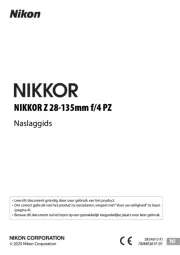
17 April 2025
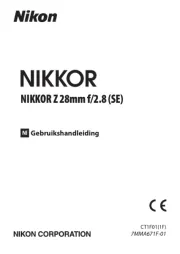
9 April 2025
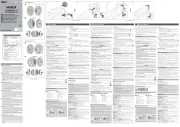
27 Maart 2025
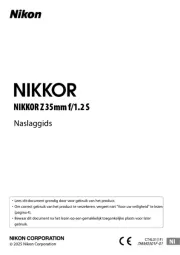
17 Maart 2025
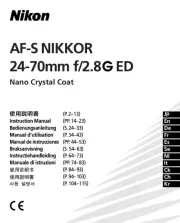
20 Februari 2025
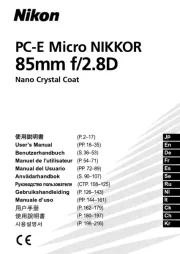
20 Februari 2025

8 December 2024
Handleiding Lens
- COLBOR
- Celly
- Tokina
- Kodak
- TTArtisan
- Fujinon
- Lensbaby
- Teradek
- Vello
- Godox
- Aputure
- Astera
- Laowa
- Carl Zeiss
- Hanwha
Nieuwste handleidingen voor Lens
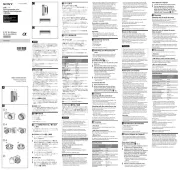
29 Juli 2025
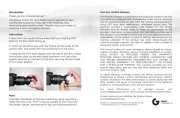
29 Juli 2025
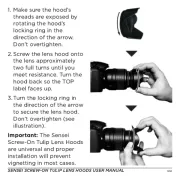
29 Juli 2025
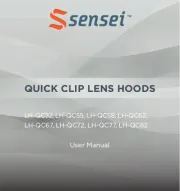
29 Juli 2025
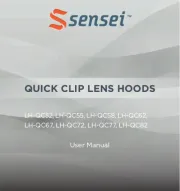
29 Juli 2025
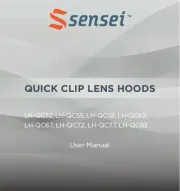
29 Juli 2025
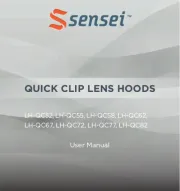
29 Juli 2025
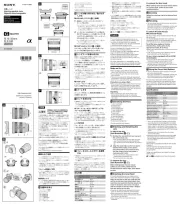
28 Juli 2025
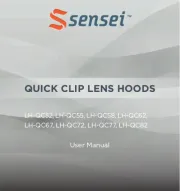
28 Juli 2025
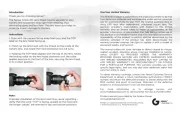
28 Juli 2025
